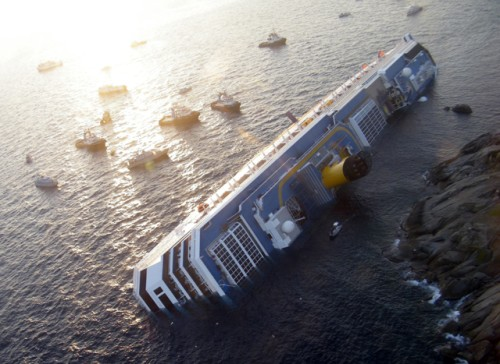Should the Captain Really Go Down with the Ship?
January 24, 2012 in Daily Bulletin

The Captain of the Costa Concordia has come under widespread criticism for abandoning ship before all passengers were taken to safety. The Guardian posted an article that examined where this cultural expectation, for captains to go down with their ship, originated from:
There are three “romantic demands” placed on modern captains, according to one author who was writing a month after the sinking of the Titanic. They were:
- The cry “women and children first” should be heard.
- All men aboard (except for foreigners) should be heroes.
- The Captain should be a superhero
The author traces the origin of these three requirements to the Birkenhead, one of the British Royal Navy’s earliest steamships that sank in 1852. In that doomed vessel hundreds of troops and officers lost their lives as they evacuated the women and children.
Read more about the wider historical context of the cultural expectation for the captain to be the last one leaving a sinking ship, some of the racial undertones this belief involves, and what this all means for Captain Schettino over here.
Source: The Guardian
Via: Marginal Revolution





![wikipedia-book[1]](http://www.Centives.net/S/wp-content/uploads/2012/01/wikipedia-book1.jpg)



Join the Discussion! (No Signup Required)